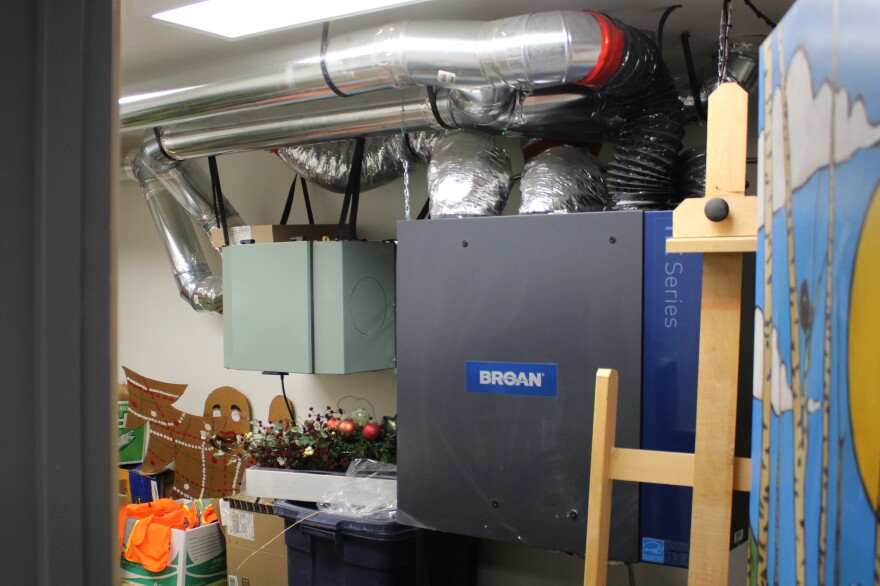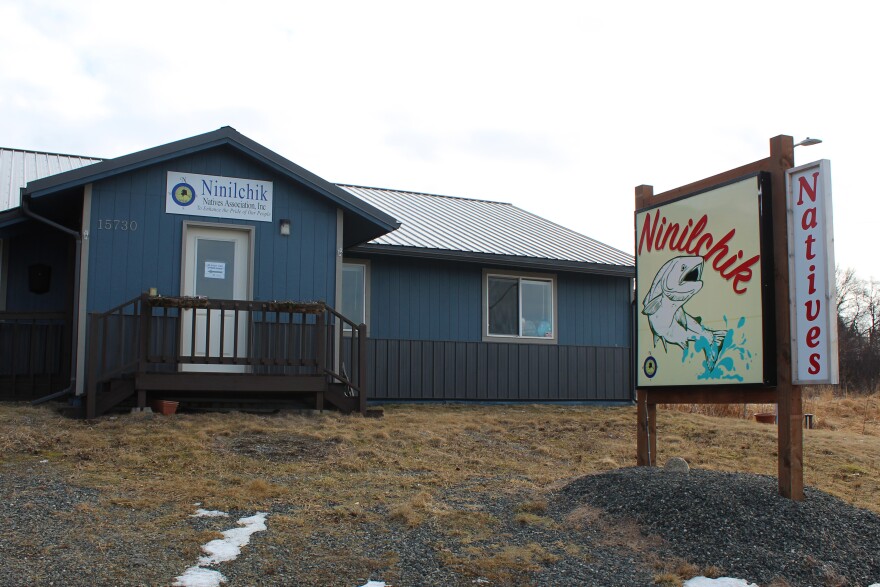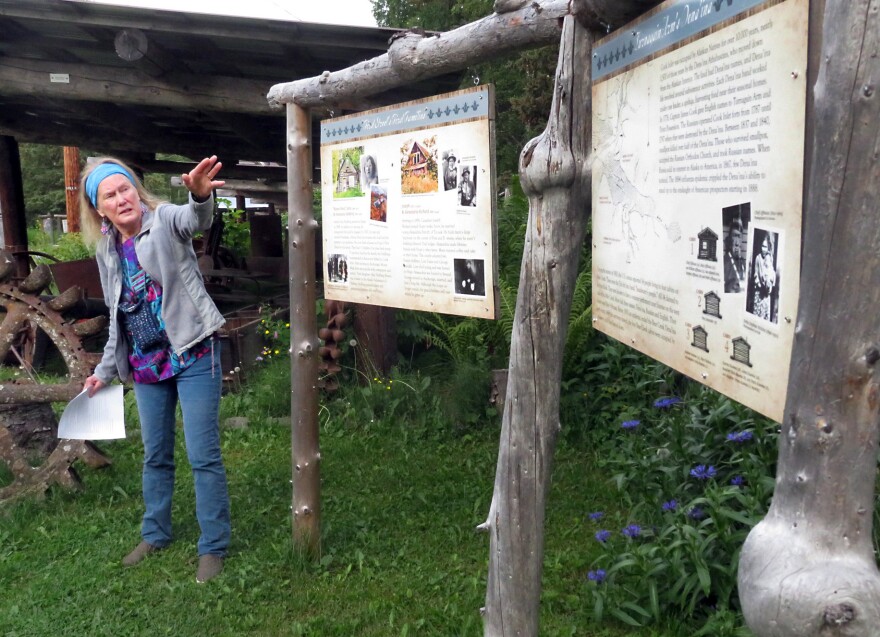It’s been more than five years since the Kenai Peninsula reported its first case of COVID-19. Federal legislation passed in 2020 and 2021 brought $285 million to the borough through grants, loans and direct payments. The goal? Offsetting the economic and societal hardship caused by the pandemic. In a new reporting series, called “What a Relief,” KDLL traces where that money went, and whether, years later, recipients think it made a difference.
Walking around the basement of the Homer Council on the Arts, it’s hard to tell the space wasn’t always a community art studio. Kilns line the back corner and shelves along the wall show off clay pots and other creations.
Scott Bartlett stands in the middle of the room. He’s the council’s executive director.
“This was a completely unfinished, dark and dingy basement with, you know, open joists in the ceiling, wires, dust, piles and piles of old things,” he says.
The remodel was paid for with federal COVID-19 relief funds – just one sliver of more than four-and-a-half trillion dollars spent by Congress on pandemic response.

The federal government ties pandemic relief spending to six pieces of legislation, all of which touched the Kenai Peninsula in some way:
- The $7.8 billion Coronavirus Preparedness and Response Supplemental Appropriations Act (2020)
- The $15.4 billion Families First Coronavirus Response Act (2020)
- The $2.1 trillion Coronavirus Aid, Relief and Economic Security Act (2020)
- The $483 billion Paycheck Protection Program and Health Care Enhancement Act (2020)
- The $900 billion Coronavirus Response and Relief Supplemental Appropriations Act (2021)
- The $1.9 trillion American Rescue Plan Act (2021)
When Bartlett stepped into his role with the Homer Council on the Arts in May 2020, the COVID-19 pandemic had already reached the Kenai Peninsula. The first peninsula resident was diagnosed with COVID-19 on March 31, 2020.
“Programming was pretty much, you know, ground to a halt,” Bartlett said.
The cancellations started with a fiddler, who’d been scheduled to perform at Homer’s Mariner Theatre at the end of March. Then went Art a la Carte, an afterschool program for elementary school students that moved online. Bartlett says it was the first time the council dabbled in virtual art programs.
One of those was “Art from the Heart,” a compilation of artwork and youth performances shared with the Homer Senior Center and long-term care residents at South Peninsula Hospital.
“This was in fall 2021, so people were remote, and especially we knew seniors with extenuating health circumstances were particularly isolated.”
In all, the Homer Council on the Arts received almost one hundred and fifty thousand dollars just under $146,500 in CARES Act and other COVID-related pandemic aid in the fiscal year that covers mid-2020 to mid-2021. More than half, almost $90,000, came from the Alaska Community Foundation’s Coronavirus Nonprofit Relief Fund].
Bartlett says every bit helped.

“We've definitely come out a lot stronger, I think, in our programming and in our infrastructure than before the pandemic,” he said.
On the Kenai Peninsula, that money was used widely and diversely by governments, nonprofits, businesses and individuals.
The Ninilchik Natives Association used $272,000 in CARES Act money to improve food security for tribal shareholders by opening up more land for subsistence use. The Hope and Sunrise Historical Society Museum used pandemic relief aid to put more signs up in their outdoor museum. And the City of Seldovia assembled health gift baskets for local businesses.
Connecting the Kenai Peninsula to funding opportunities was Tim Dillon’s top priority during the pandemic. He was executive director of the Kenai Peninsula Economic Development District, or KPEDD and says the peninsula’s economy benefited from not being too dependent on any one industry.
“Whether it be commercial sport fishing, doesn't matter,” he said. “It's an important part, but it isn't 100% as compared to Bristol Bay. We have tourism, that's very, very important, but it's not the same as Southeast where that's 85 to 90% of what they're looking for. We have gas and oil, but it's not like the Slope.”
By the end of June 2020, more than one in ten Alaska workers had filed for unemployment insurance in the preceding 12 weeks. That’s according to research by the University of Alaska’s Institute for Social and Economic Research. The Kenai Peninsula’s unemployment rate climbed to 9.6% in 2020, peaking at 17.2% in April.
Amid the tumult, Dillon says KPEDD focused on providing clarity and advocacy. He lobbied the state, for example, to let people request funds through a paper application, in addition to on a computer. And KPEDD held in-person clinics with close to 1,000 business owners to help fill out those applications.
“The bottom line was we wanted to provide a service so that as much money that possibly could be brought to the Kenai Peninsula, we wanted to help and make sure that we could facilitate that,” he said.

In a lot of cases, he says that was a matter of recognizing and leveraging each applicant’s needs.
“If you had a restaurant versus a fast food restaurant where you could do drive-thru, that was – there was a big difference between those two,” he said. “The idea of a dry cleaner, for example, you would figure that, well, people are going to need to keep their things nice and clean and all, but they weren't going out. They weren't going to the office.”
When it comes to the legacy impact of COVID relief funds, Dillon says the proof is in the pudding.
“You see it in the fact that people are still here,” he said.
Back in Homer, Bartlett, the arts council executive director, says their CARES Act-funded basement remodel was originally meant to let people social distance and boost air filtration in the building. But it’s also helped Homer realize dreams of a community ceramics studio.
“The funds that were available to help us get through that have really served as sort of a springboard for us to bounce back and expand programming and expand community programs,” he said.
This was the first installment in a new reporting series by KDLL called “What a Relief,” which looks at the impact and legacy of federal COVID-19 relief funds distributed to the Kenai Peninsula. Tomorrow, hear from government leaders about how the influx of money supported their operations and supported citizens. This reporting project is supported by the Alaska Center for Excellence in Journalism.



